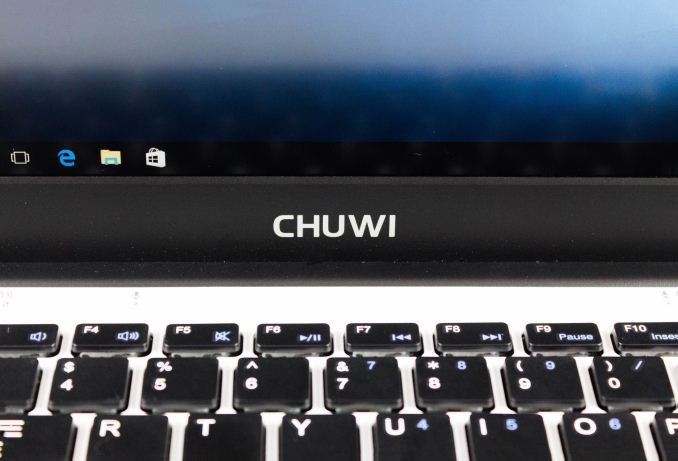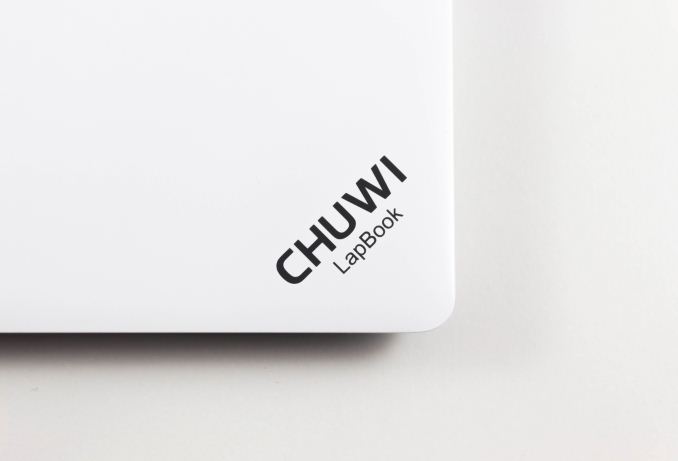The Chuwi LapBook 14.1 Review: Redefining Affordable
by Brett Howse on March 10, 2017 8:00 AM ESTFinal Words
Compromise is always a word that can evoke the wrong impressions, but it’s a fact of life that every laptop is full of compromise. The art is finding the right balance of compromise to fit into the target budget, while still providing the features that people need and expect. When discussing a laptop with a MSRP under $300 USD, this can be more pronounced than on a $2000 Ultrabook. Luckily, within a few hours of using the Chuwi Lapbook 14.1, you can see that the company has done a great job finding that balance of features and cost. There is a lot to like about this notebook from a Chinese company trying to make a splash on the world stage.
I think it’s the right place to start by talking about the display. It’s been a thorn in my side that any time a low-cost notebook is offered, almost exclusively they are still shipping with TN panels, often with 1366x768 resolutions. Heck, you can still find a TN display on $1000 gaming notebooks. Chuwi, by offering a 1920x1080 IPS display, has already moved a good step ahead of most of the competition. The fact that this is a 14-inch notebook really drives this home, since you don’t feel cramped like you would on a 11-inch model. That’s really only half of the story though, since Chuwi also implemented much thinner bezels than most of the notebooks in this price range, which gives you a much better display in a smaller footprint. Our display testing showed that the IPS is relatively good with color reproduction, although it does only cover less than 65% of the sRGB gamut. That’s not ideal, but it’s also a result of having to use lower cost LEDs to keep the display in-budget. I would think for most people this trade-off is the right kind of compromise. You still get the great viewing angles of IPS, along with very decent contrast on this device, all in a thin-bezel design. This is an easy win for Chuwi.
The overall notebook design is also very well done. The white plastic doesn’t have the premium feel of a metal laptop, but it looks good, it feels good, and is a nice choice in materials for something in this price range. The plastic does not feel brittle, and the matte texture gives plenty of grip. White is always going to be a concern long-term, with dirt and grime building up on it, but this is a sharp looking laptop.
Also, the move to Intel’s Apollo Lake SoC, with the new Goldmont CPU cores, and Gen 9 graphics, is a surprisingly solid platform. It doesn’t offer the snappy response of Intel’s Core lineup, but in light tasks, it is decent. Coupled with 4 GB of RAM helps a lot too, since some of these notebooks can be saddled with only 2 GB of memory, which is tough to use when a web page can use over a Gigabyte on its own. Also, the 64 GB of eMMC is reasonable quick, but it’s the volume here that is important, since 32 GB eMMC devices can be a burden to live with long-term. This isn’t going to set speed records, but a quad-core Goldmont with 4 GB of RAM and 64 GB of storage is a nice bit of kit in a notebook in this price range. Just don’t expect to do anything but the lowest end gaming.
Purchasing from a less familiar brand does bring about questions of long-term durability and support, and it’s difficult to comment on this when only using a device for a couple of months, but over the last couple of months it’s been solid. The reports of overheating are somewhat alarming, and although it looks like that can be fixed by the owner, it’s never a great sign. Whether that is just a few devices, or more, it’s tough to say, and Chuwi did not mention this being an issue when questioned on the matter. This one has not shown any signs of this though, and in fact the temperatures are very respectable for a fanless notebook. I have to mention it though.
For those that have the abilities to tackle the CPU heat transfer, it’s also interesting to note that if you remove the bottom of the notebook, there’s a M.2 slot for a SSD, so you can add extra storage this way, as well as through a micro SD card.
My only real complaint with the laptop was the battery life, which came in well under what I was expecting for a laptop with a 45 Wh battery and an Atom CPU. I think the display could be a major cause here though, since to get to our 200 nits brightness, the display was almost set at 100%, which is likely not the most efficient for the backlighting. It still delivered between six and eight hours of battery life, but I must admit I was expecting closer to ten or eleven hours.
Even with the concerns about CPU cooling, which I never experienced, it’s hard not to recommend this notebook. For around $250 USD, you get get decent performance, a 14-inch 1920x1080 display, 4 GB of RAM, and 64 GB of storage. The design is pleasant to look at, with a nice white color and thin display bezels, and it’s only a few pounds, so it’s pretty easy to carry around. As much as it’s fun to see the most powerful systems, it’s also great to see a well-executed take on the low-cost notebook, which is a market that has been neglected somewhat of late.
Chuwi is offering a $24 discount code on Amazon for AnandTech readers. Please enter the code TIUGTN5W at checkout













75 Comments
View All Comments
bill.rookard - Friday, March 10, 2017 - link
Never mind, apparently there IS an M.2 slot! Outstanding!Andrew Vanelli - Friday, March 10, 2017 - link
Indeed, there is, people are using it well, although, there's no way found to install the Windows on it (at least according to 4pda.ru). Someone, apparently, succeeded to install linux-like somethingwebdoctors - Friday, March 10, 2017 - link
I love using my Toshiba CB2 when I'm travelling, but the crouton Ubuntu can sometimes be flaky. Having a native PC I can dual boot into windows or Ubuntu would be gold, especially at a price of $250, 14 inch size and under 3 lbs with an IPS screen.When my CB2 bites the dust, I'll definitely buy this thing, or whatever equivalent is selling, its a no-brainer.
tipoo - Saturday, March 11, 2017 - link
Still my favorite Chromebook design, it's a shame Toshiba exited the NA market. Would have loved a CB3.mitcoes - Friday, March 10, 2017 - link
I do not understand why this cheap chinese laptops do not offer a pre installed and even cheaper Ubuntu Kylin option with the new UKUI for those that dislike the MS WOS 10 desktop, and or a cheaper Chrome OS version.If MS WOS 10 cost near 100 USD in this prices the Kylin or Chrome OS version lower price would make them best sellers.
keeepcool - Friday, March 10, 2017 - link
Fuck thiskeeepcool - Friday, March 10, 2017 - link
Can post my comment, a fuck this is not spam, but two phrases saying that Windows licenses in volume are under 5 bucks is spam.asgallant - Friday, March 10, 2017 - link
Unless MS has changed its policy, the Windows license is super cheap, if not free, for OEMs making Chromebook competitors, so Ubuntu or ChromeOS wouldn't make the laptop cheaper.niva - Friday, March 10, 2017 - link
No, it's not free. You can bet at least $10 went towards that license, maybe as much as $50.andychow - Friday, March 10, 2017 - link
It's $15, exactly. The reviewer mentions that this laptop fluctuates between $250-265, but actually it's $250 for the one with the fake license, add $15 for the real license, when you order from the source. They actually explicitly mention this on the chinese page.